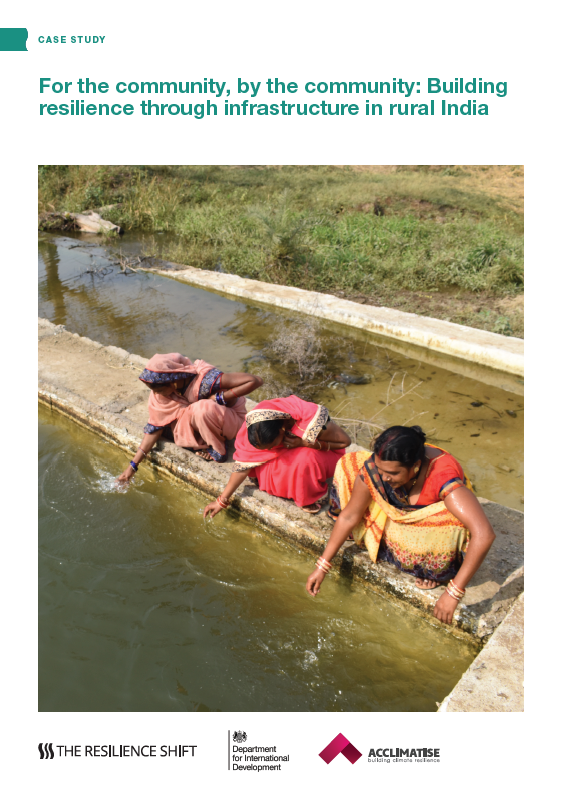Resources
74 Found

Case Study: For the community, by the community: Building resilience through infrastructure in rural India
Document Type: Projects and Case StudiesThe Resilience Shift exists to inspire and empower a global community to make the world safer through resilient infrastructure. More people than ever depend on the critical infrastructure
systems that provide essential energy, water, transport and communications services, and underpin food, healthcare and education. When this infrastructure fails the consequences can be
catastrophic.
Supported by Lloyd’s Register Foundation and Arup, the Resilience Shift provides knowledge and tools for those responsible for planning, financing, designing, delivering, operating and maintaining critical infrastructure systems. Our aim is to ensure infrastructure systems are able to withstand, adapt to, and recover quickly from anticipated or unexpected shocks and
stresses – now and in the future.
Building Resilience and Adaptation to Climate Extremes and Disasters (BRACED)
Document Type: Projects and Case StudiesAs stated under goal one of the Sustainable Development Goals, building the resilience of the poor and those in vulnerable situations is vital to end extreme poverty – as is reducing their exposure and vulnerability to climate-related extreme events and disasters. We know that these vulnerabilities, when combined with other shocks and stresses, presents significant barriers to development progress and economic growth.

Building resilience for all: Intersectional approaches for reducing vulnerability to natural hazards and climate change – Kenya
Document Type: Projects and Case StudiesThis note provides insights from the ODI report Building resilience for all: intersectional approaches for reducing vulnerability to natural hazards in Nepal and Kenya, which highlights challenges and opportunities for understanding intersecting inequalities and delivering effective intersectional approaches that help build resilience to natural hazards and climate change. It presents findings from the Kenya study. A companion paper analyses findings from Nepal.

Building resilience for all: Intersectional approaches for reducing vulnerability to natural hazards and climate change – Nepal
Document Type: Projects and Case StudiesThis note provides insights from the ODI report Building resilience for all: intersectional approaches for reducing vulnerability to natural hazards in Nepal and Kenya, which highlights challenges and opportunities for understanding intersecting inequalities and delivering effective intersectional approaches that help build resilience to natural hazards and climate change. This note presents findings from the Nepal study. A companion paper analyses findings from Kenya.

Building Resilience with Natural Adaptations to Change – case studies
Document Type: Projects and Case StudiesBainbridge Island, located in the heart of Washington’s Puget Sound, is known for its rural character, thriving arts culture, and close proximity to the City of Seattle. A short ferry trip away from Seattle, Bainbridge Island is home to families and individuals who share an appreciation of the Island’s unique natural features. Bainbridge Island offers opportunities to engage in a wide range of outdoor recreation – from hiking or biking along an extensive network of trails to kayaking throughout the various harbors and inlets. Because of their idyllic location, Bainbridge has been experiencing increasing development pressure, especially along their 53 miles of shorelines. The Bainbridge Island Land Trust (BILT) was started in 1989 by a group of residents who were concerned about balancing growth and conservation needs on this 65 square mile island. The Bainbridge Island Land Trust’s work exemplifies efforts to preserve the many values inherent in the rural Pacific Northwest landscapes and wildlife of this region.
